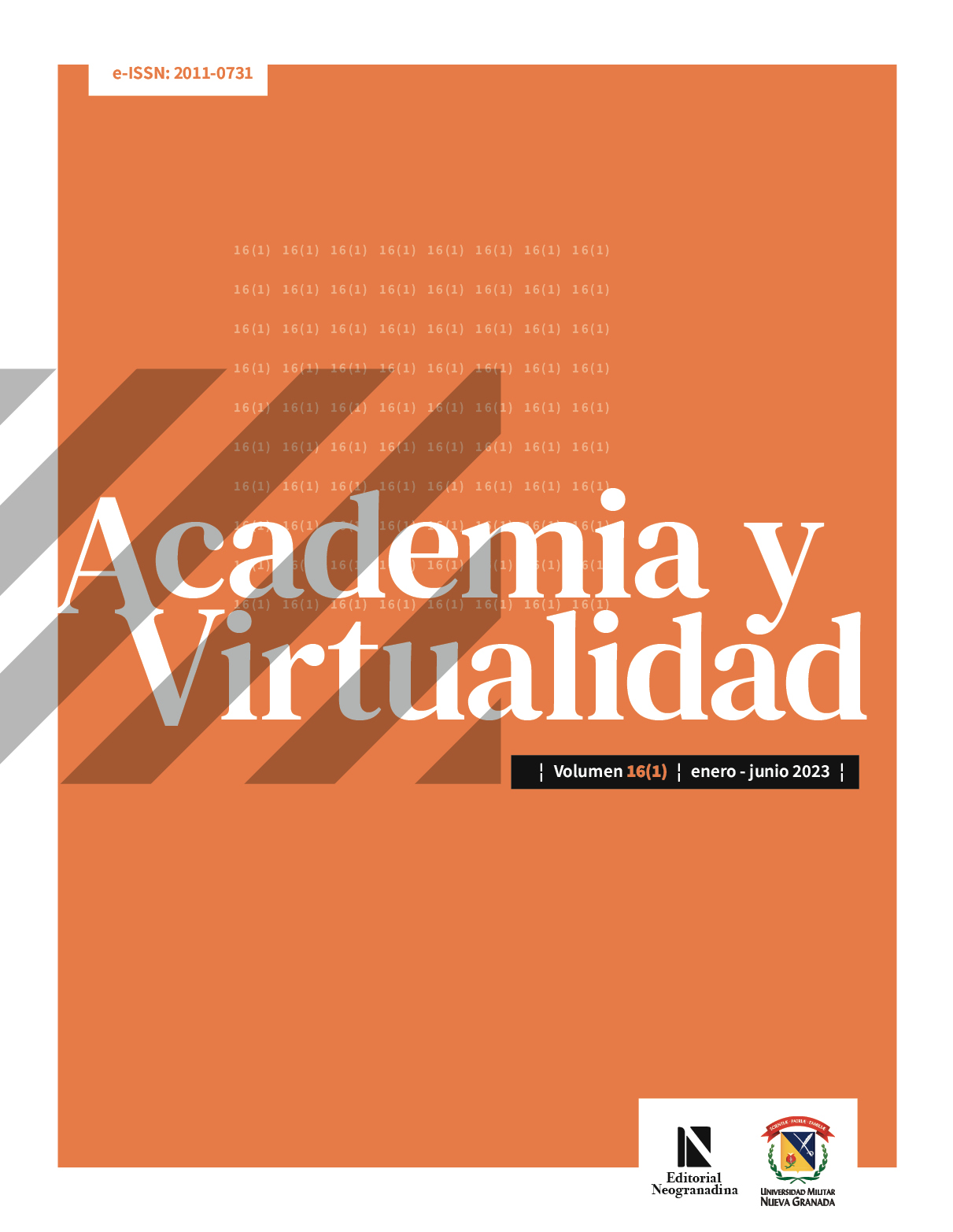Online Collaborative Learning
Connecting Classrooms Between China and Colombia in pandemic times
Abstract
Technology provides new learning environments in which 21st-century skills such as collaboration are involved, and English becomes the language of communication and interaction among participants. During the lockdown caused by the COVID-19 pandemic, students faced the shift from face-to-face to online classes, which made students feel demotivated and lost opportunities to use English in meaningful environments. This article reports a qualitative research process to explore students’ perceptions of an Online Collaborative Learning (OCL) project focused on story writing between China and Colombia. Accordingly, surveys and interviews were implemented to gather data
from the 51 students and 12 English teachers that participated in the study. The 51 students were divided into six groups, and each group was assigned two coordinators: one from China and one from Colombia. This article contributes to knowledge in OCL and cross-cultural communication since it describes students’ strengths and difficulties when interacting with others whose first language is not English. Specifically, it is concluded that speakers of English as a foreign language deal with
challenges and strengths related to time zone differences, English language proficiency, intrinsic motivation,
and attitudes. It is also mentioned that teamwork skills, empathetic language, and the ability to use technology mediate the collaborative writing process.
Downloads
References
Akbari, E., Naderi, A., Simons, R.-J., & Pilot, A. (2016). Student engagement and foreign language learning through online social networks. Asian-Pacific Journal of Second and Foreign Language Education, 1(1), 1-22. https://doi.org/10.1186/s40862-016-0006-7
Albesher, K. (2012). Developing the writing skills of ESL students through the collaborative learning strategy. Thesis submitted for the degree of Doctor of Philosophy (Integrated) in Education and Applied Linguistics. https://theses.ncl.ac.uk/jspui/handle/10443/1836
Altınay, Z. (2016). Evaluating peer learning and assessment in online collaborative learning
environments. Behaviour & Information Technology, 36(3), 312–320. https://doi.org/10.1080/0144929x.2016.1232752
Angelova, M., & Zhao, Y. (2014). Using an online collaborative project between American and Chinese students to develop ESL teaching skills, cross-cultural awareness and language skills. Computer Assisted Language Learning, 29(1), 167–185. https://doi.org/10.1080/09588221.2014.907320
Capdeferro, N., & Romero, M. (2012). Are online learners frustrated with collaborative learning experiences? The International Review of Research in Open and Distributed Learning, 13(2), 26. https://doi.org/10.19173/irrodl.v13i2.1127
Carapina, M., & Boticki, I. (2015). Exploring Technology Supported Collaborative and Cooperative Group Formation Mechanisms. ERIC Clearinghouse.
Chen, S. J., Hsu, C.L., & Caropreso, E. J. (2006). Cross-cultural collaborative online learning: When the west meets the east. International Journal of Technology in Teaching and Learning, 2(1), 17-35.
Chih-Cheng, L., Hsin-Jung, C., & Hsien-Sheng, H. (2011). EFL students’ perceptions of learning vocabulary in a computer-supported collaborative environment. TOJET: The Turkish Online Journal of Educational Technology 10(2), 91-99.
Cooney, A., & Darcy, E. (2020). ‘It was fun’: Exploring the pedagogical value of collaborative educational games. Journal of University Teaching & Learning Practice, 17(3). https://ro.uow.edu.au/jutlp/vol17/iss3/4
Cutajar, M. (2019). Teaching Using Digital Technologies: Transmission or Participation?. Education Sciences, 9(226), 1-13. http://dx.doi.org/10.3390/educsci9030226
Creswell, J. W. (2009). Research design: qualitative, quantitative and mixed methods. Sage Publications.
Derakhshan, A., & Hasanabbasi, S. (2015). Social Networks for Language Learning. Theory and Practice in Language Studies, 5(5), 1090-1095. http://dx.doi.org/10.17507/tpls.0505.2
Egbert, J. (2005). CALL Essentials Principles and Practice in CALL Classrooms. Teachers of English to Speakers of Other Languages, Inc. (TESOL).
Fewkes, A. M., & McCabe, M. (2012). Facebook: Learning Tool or Distraction. Journal of Digital Learning in Teacher Education, 28(3), 92–98. https://doi.org/10.1080/21532974.2012.10784686
Freiermuth, M., & Huang, H. (2012). Bringing Japan and Taiwan closer electronically: A look at an intercultural online synchronic chat task and its effect on motivation. Language Teaching Research, 16(1), 61–88. https://doi.org/10.1177/1362168811423341
García, J., & Frances, M. (2017). English for Business: Student Responses to Language Learning Through Social Networking Tools. ESP Today, 5(1), 91-107. https://doi.org/10.18485/esptoday.2017.5.1.5
Gharehblagh, N., & Nasri, N. (2020). Developing EFL elementary learners’ writing skills through Mobile-Assisted Language Learning (MALL). Teaching English with Technology, 20(1), 104-121, http://www.tewtjournal.org
Gislev, T., Thestrup, K., & Elving, P. (2020). The flexible meeting place: Connecting schools through networked learning. Global Studies of Childhood, 10(3) 275–288. https://doi.org/10.1177/2043610620944937
Hampel, R., & Hauck, M. (2006). Computer-mediated language learning: Making meaning in multimodal virtual learning spaces. The JALT CALL Journal 2(2), 3-18. https://doi.org/10.29140/jaltcall.v2n2.23
Harasim, L. (2012). Learning theory and online technologies. Routledge.
Huang, R., Spector, J. M., & Yang, J. (2019). Educational Technology. A Primer for the 21st Century. Springer Nature Singapore Pte Ltd. https://doi.org/10.1007/978-981-13-6643-7
Kumi-Yeboah, A. (2018). Designing a cross-cultural collaborative online learning framework for online instructors. Online Learning, 22(4), 181-201.https://doi.org/10.24059/olj.v22i4.1520
Liu, M., Abe, K., Cao, M. W., Liu, S., Ok, D. U., Park, J., Parrish, C., & Sardegna, V. G. (2015). An Analysis of Social Network Websites for Language Learning: Implications for Teaching and Learning English as a Second Language. CALICO Journal, 32(1), 113-152.
Jin, L. (2017): Digital affordances on WeChat: learning Chinese as a second language. Computer Assisted Language Learning. https://doi.org/10.1080/09588221.2017.1376687
Lü, L. (2018). Teacher, Teaching, and Technology: The Changed and Unchanged. International Education Studies, 11(8), 39-50. https://doi.org/10.5539/ies.v11n8p39
MacLeod, J., Yang, H., & Xiang, Z. (2017). Understanding College Students’ Intrinsic
Motivation and Social Interdependence in Intercultural Computer-Supported Collaborative Learning Between USA and China. Asia-Pacific Edu Res, 26(3-4), 205-217. https://doi.org/10.1007/s40299-017-0341-6
Magen-Nagar, N., & Shonfeld, M. (2017). The impact of an online collaborative learning program on students’ attitude towards technology. Interactive Learning Environments, 26(5), 621–637. https://doi.org/10.1080/10494820.2017.1376336
Mkdadi, A. M. (2019). How Technology Affects Language Learning and Teaching. IJEISR, 3(1), 1-7. https://doi.org/10.31219/osf.io/m3jx6
Martínez-Carrasco, R. (2018). Social media in L2 education: exploring on-line collaborative writing in EFL settings. In F. Rosell-Aguilar, T. Beaven, & M. Fuertes Gutiérrez (Eds), Innovative language teaching and learning at university: integrating informal learning into formal language education (pp. 17-26). Research-publishing.net. https://doi.org/10.14705/rpnet.2018.22.772
Nam, C. W. (2016). The effects of digital storytelling on student achievement, social presence, and attitude in online collaborative learning environments. Interactive Learning Environments, 25(3), 412–427. https://doi.org/10.1080/10494820.2015.1135173
Ochoa, D., & Medina, N. (2014). A Virtual Room to Enhance Writing Skills in the EFL Class. HOW, 21(1), 62-81. https://doi.org/10.19183/how.21.1.15
Rojas-Bahamón, M.J; Aguilar-Cruz, P.J y Arbeláez-Campillo, D.F. (2020). Curricular integration as a strategy to strengthen the educational process in public institutions in COVID-19 times. Revista Inclusiones Vol: 7 num Especial (2020): 233- 241.
Sijia, X., Xia, H., Xinli, C., & Jiangzhi, Z. (2019): Building an online community of practice through WeChat for teacher professional learning. Professional Development in Education. https://doi.org/10.1080/19415257.2019.1647273
Walker, A., & White, G. (2013). Technology Enhanced Language Learning: Connecting theory and practice. Oxford.
Wang, M., Poole, M., Harris, B., & Wangemann, P. (2001). Promoting Online Collaborative Learning Experiences for Teenagers. Educational Media International, 38(4), 203–215. https://doi.org/10.1080/09523980110105079
Wu, J., & Miller, L. (2019). Raising native cultural awareness through WeChat: a case study with Chinese EFL students. Computer Assisted Language Learning. https://doi.org/10.1080/09588221.2019.1629962
Vartiainen, H., Vuojärvi, H., Saramäki, K., Eriksson,M., Ratinen, I., Torssonen, P., Vanninen, P., & Pöllänen,S. (2022). Cross-boundary collaboration and knowledge creation in an online higher education course. British Journal of Educational Technology,53, 1304– 1320. https://doi.org/10.1111/bjet.13186
Xodabande, I. (2017) The effectiveness of social media network telegram in teaching English language pronunciation to Iranian EFL learners. Cogent Education, 4 (1). https://doi.org/10.1080/2331186X.2017.1347081
Yang, J., Huiju, Y., Cen, S.-J., & Huang, R. (2014). Strategies for Smooth and Effective Cross-Cultural Online Collaborative Learning. Educational Technology & Society, 17 (3), 208–221.
Zhou, Y., & Wei, M. (2018). Strategies in technology-enhanced language learning. SSLLT 8 (2), 471-495. https://doi.org/10.14746/ssllt.2018.8.2.13
Copyright (c) 2022 Academia y Virtualidad

This work is licensed under a Creative Commons Attribution-NonCommercial-NoDerivatives 4.0 International License.












